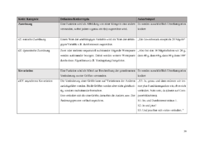Qualitative Analysis
Summary of Study
Covariation is a major aspect of functional thinking, but not easily accessible for students. Even more it is somewhat underrepresented in mathematics teaching at school compared to the correspondence aspect. Since experiments have proven to be particularly beneficial for functional thinking, two experiment-based approaches have been developed and evaluated with regards to the learning of functional thinking. One approach uses a numerical setting, which emphasises the correspondence aspect. A second, qualitative approach (as presented in this GeoGebra-book) sets the focus on covariation. Previous quantitative studies have shown, that the qualitative setting leads to significantly higher learning gains in FT than the numerical setting (Digel & Roth, 2022).
In a qualitative study we examined the development of the covariation aspect during intervention in the numerical and the qualitative setting respectively in eight focus groups (high-/low-achieving), using the levels of covariational reasoning (Thompson & Carlson, 2017). In accordance with quantitative findings the groups in the qualitative setting show higher levels of covariational reasoning and more consistently dynamic argumentations.
Study Design
In this study the following questions guide the analysis:
(RQ 1) How does the aspect of covariation develop during training?
(RQ 2) Are there differences in the development between the qualitative and the numerical approach?
16 high- and 16 low-performing students in the 6th and 7th grades of two grammar schools were videotaped when participating in the intervention with the numerical and the qualitative learning environments at the mathematical school lab of the University in Landau.
Participation took place in July and August 2021.
They worked in groups of four three times 90 minutes on one morning. All had little or no previous experience with functions in mathematics lessons.
Two groups of four of the low-achievers and two groups of four of the high achievers worked on the numerical setting, the other two groups of low-achievers and high-achievers worked on the qualitative setting. Teachers classified the students as high-/low-performers.
